As AI Agent evolves from instrumental attributes to autonomous economic subjects, AIAgent becomes an economic player capable of autonomous decision-making, operationalization and value exchange. However, the traditional payment infrastructure does not meet the core needs of Agent in terms of autonomous trading, cross-ecological interaction, and identity verification。
These bottlenecks triggered the birth of a new generation of agreements, — — x402, Agent Payments Protocol (AP2) and ERC-8004, creating a reliable value exchange base for the upcoming machine economy. This paper will provide an in-depth analysis of the technical principles, applications and ecological realities of these three agreements, showing how together they shape the payment landscape of the future AIAgent economy。
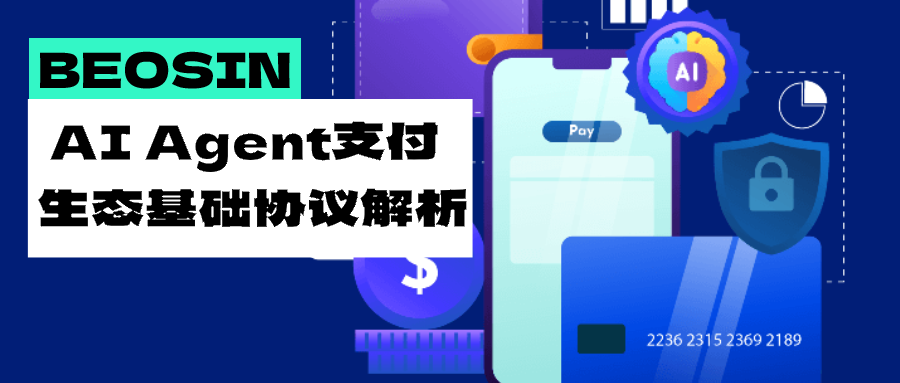
x402: HTTP original chain payment protocol
the core innovation of x402 introduced by Coinbase is the activation of the Internet's underutilized HTTP 402 status code ("PaymentRequired"), which embeds payment logic into web request-response stream to achieve “ API calls to pay ” and settles by stabilizing currency or other encrypted currency to address the high friction of traditional payments。
Detailed protocol
As x402 is an open agreement based on HTTP 402 status code, it is structured as a client/server structure. Clients are buyers of services/commodity, and servers are sellers of services/commodity. On the basis of the client/server structure, Coinbase provides the vendor with the services of a facilitator (Facilitators) to simplify the process of validation and settlement of payments between buyers and sellers。
We take the first server in x402scan, Canza, for example. First, the user initiates a request to access Canza ' s fee-paying services on the client side。
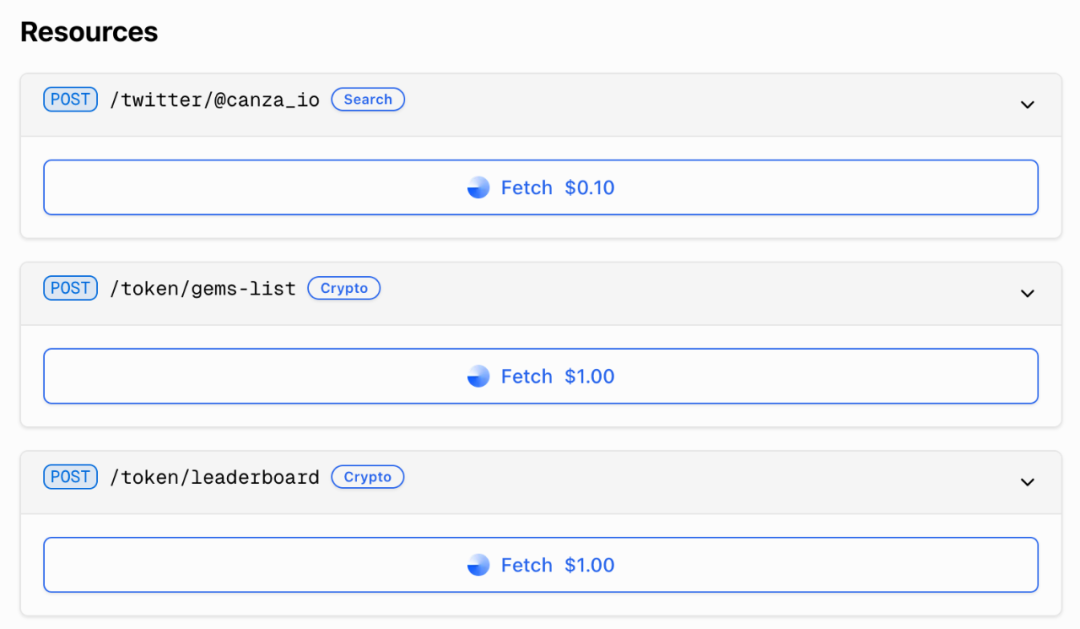
Subsequently, the Canza server used HTTP 402 Response to define payment requirements: the client would need to provide X-PAYMENTHHEAder and pay through USDC in the Base chain. As shown in the figure below:
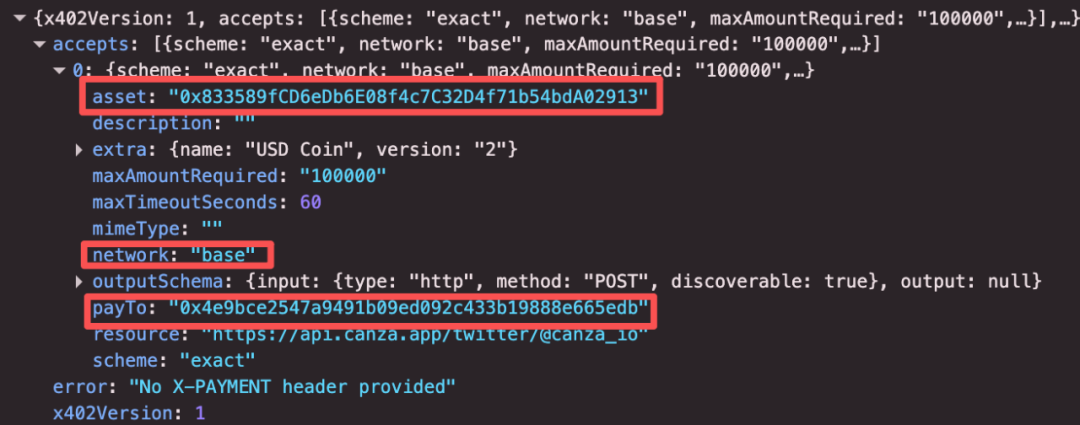
After the client analyzes the 402 ResponseJSON content, the wallet is sent to sign a message about Transfer WithAuthorization (through ERC-3009). The message allowed the signatory to transfer the non-Gas charges from the signatory ' s address by entrusting the third party EOA address or contractual address. In this example, we will entrust Canza with the collection address of 0x4e9bCe2547A9491b09ed092c433B1988e665edB to transfer USDC from our wallet。
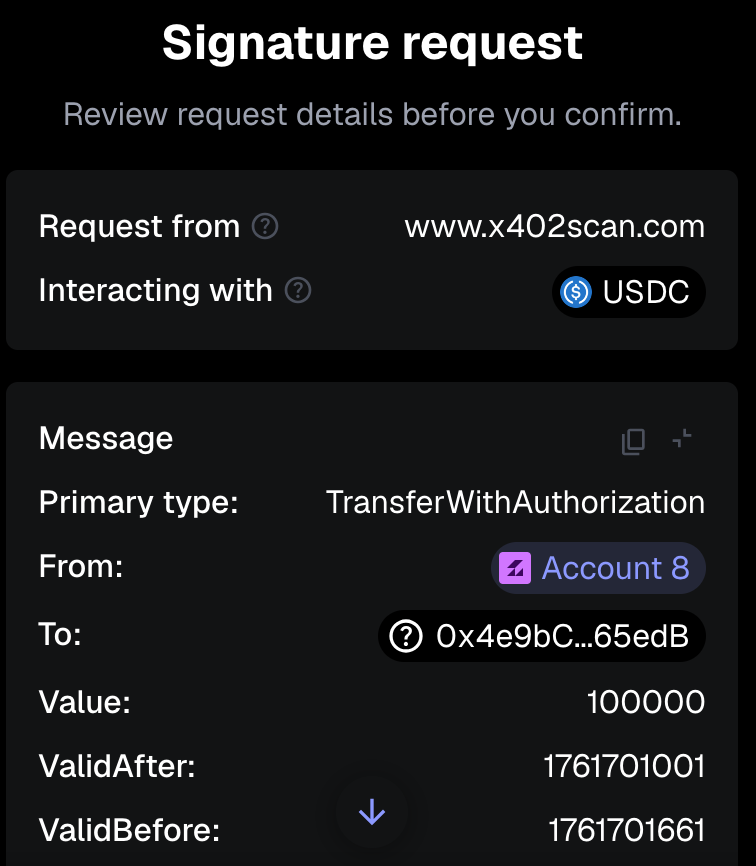
The message was then signed by the user, the client submitted to Payload using the X-PAYMENTHHEAder coded Base64, and the pass-in Payload on the Canza server was validated by the facilitator (Facilitators) and the payment was settled on the block chain for the server. After the Canza server confirmed the payment, the requested service was provided to the user。
from the above examples, the workflow of the x402 agreements can be summarized as follows:
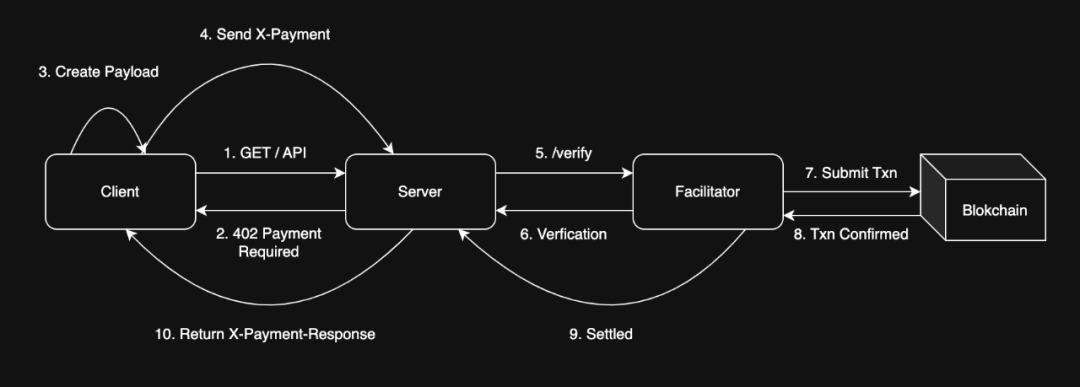
Of particular note, the x402 protocol was used to pay multiple encrypted assets (required to support ERC-3009, default USDC) supporting multiple block chains (Base, Avalanche and others EVM, Solana) and only needed to be configured at this end of the server:
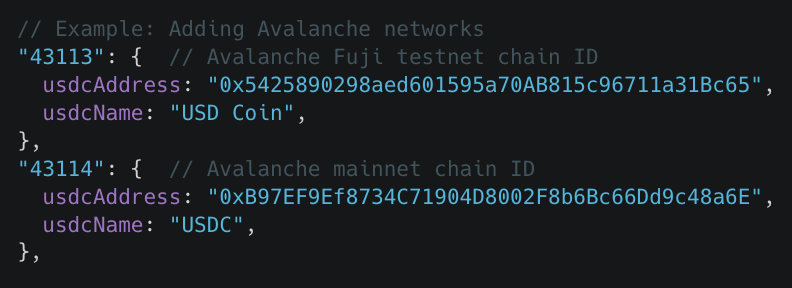
Agent Payments Protocol (AP2) : Agent ecological credible payment system
AP2 is based on the Open Payments Framework extended by AgentoAgent (A2A) Communication Agreement and Model Context Protocol (MCP). Its core objectives are to address the three core issues in Agent business: authentication of authorization (certification of user permission for Agent), authenticity (ensure that transactions reflect the true needs of users), and accountability of transactions (defining accountability in case of dispute) in order to achieve safe transactions between AIAgent and any compliant vendor。
The work flow of the AP2 agreements is structured around the core concept of Digital Authorizations (Mandates), which are digital contracts that are protected from tampering and signed by code, as verifiable evidence of a user ' s order. It is divided into three types of authorization:
1. Intent Mandate
Applicable to automated transactions where the user is not present. The user's advance instructions to AIAgent contain clear conditions, such as "buy tickets to concerts with a budget not exceeding $500"。
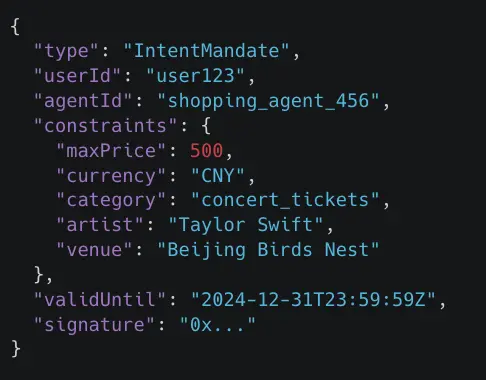
Cart Mandate
Applicable to transactions identified in the presence of the user. Generated when agents prepare specific commodities and prices for user confirmation. The user ' s approval of this is to sign the Shopping Car authorization, create a secure and irrevocable record of the exact goods and prices and ensure that they are paid as they are seen。
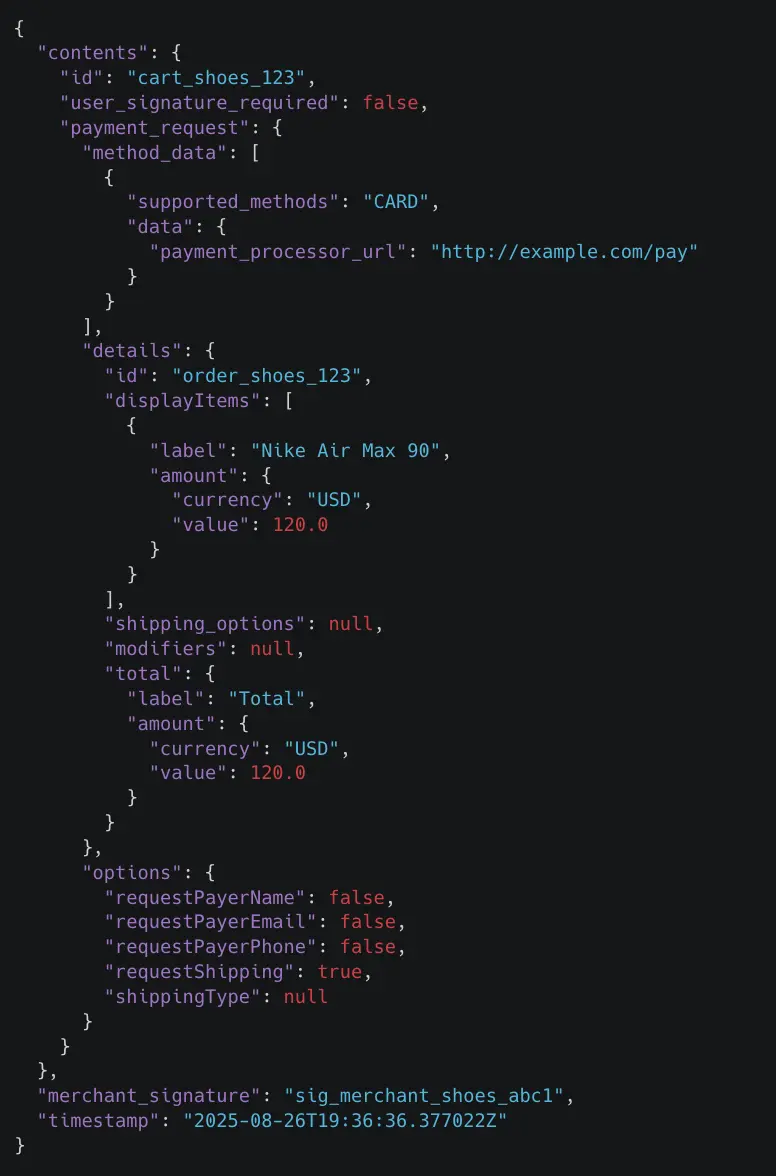
3. Payment authorization (Payment Mandate)
This is an independent voucher, shared with payment networks and issuers, which is designed to convey information on AI Agent ' s participation and user presence, help resolve transactions disputes, conduct risk assessments and regulate。
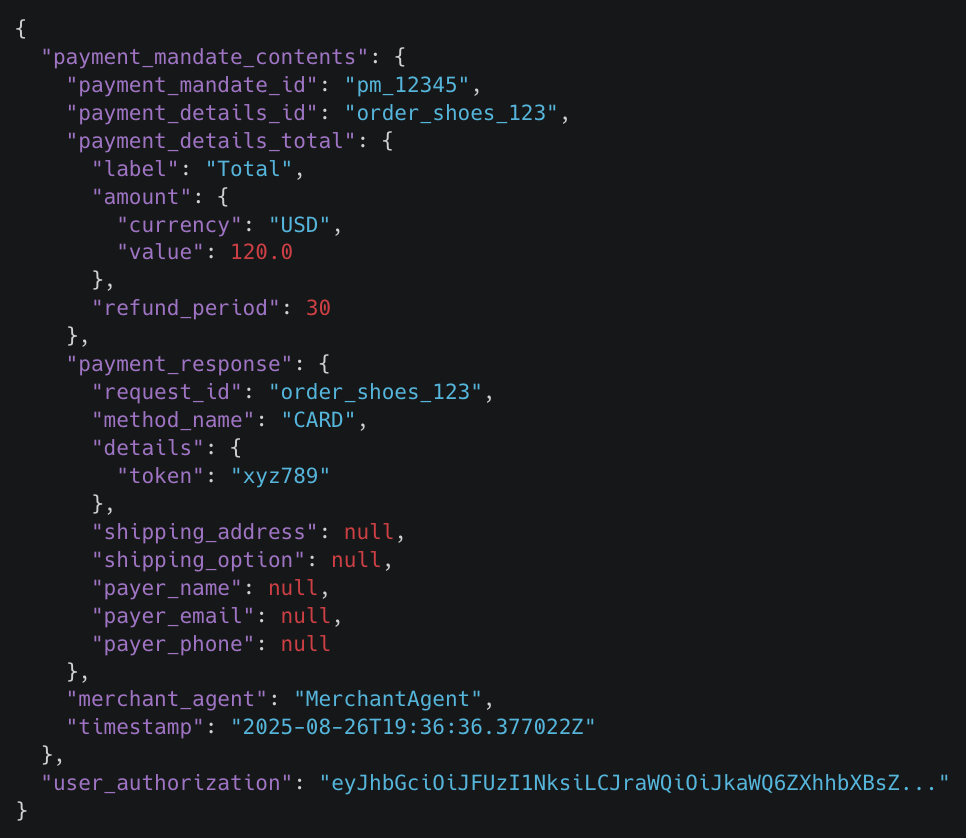
ERC-804: Decentralisation of the AIAgent identity and credibility system
The ERC-8004 is a decentralized AIAgent identity solution in the Taigaya to resolve the issue of determining the authenticity of the AIAgent identity, the reliability of behavioural records and their probability. Unlike AP2, ERC-8004 focuses on building mutual trust between AIAgents rather than between user-AIAgent-businesses。
THE DESIGN OF ERC-8004 IS STRUCTURED AROUND THREE LIGHTWEIGHT FORMS, EACH OF WHICH DEALS WITH DIFFERENT ASPECTS OF THE TRUST MODEL:
1. Identity Register
Based on the ERC-721 standard and the extension of the URISTORAGE function, the design will make the AIAgent identity compatible with the existing NFT ecosystem。
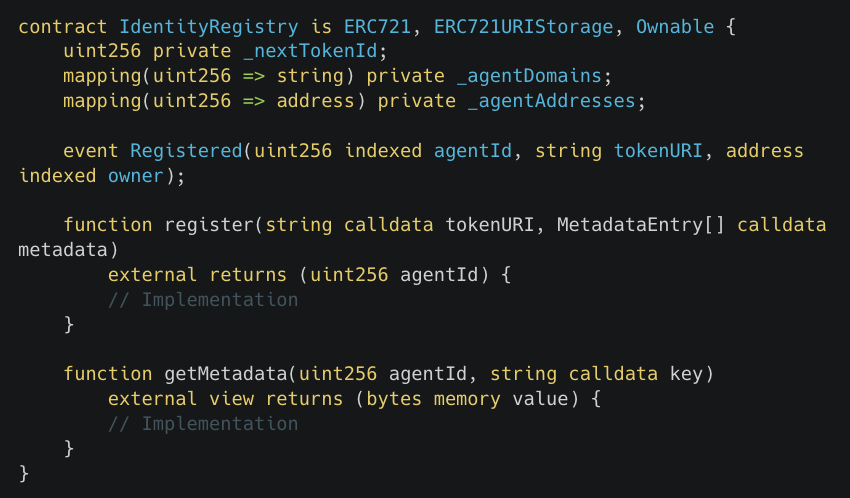
Each AIAgent is registered by calling the register function and gets a single agentId (i.e. tokenId of ERC-721). At the time of registration, the agent is required to provide tokenURI, which refers to the registration file (Agent Regulation File), which follows the standardized JSON format and contains information such as the agent ' s name, description, endpoint and supporting trust model。
2. Reputation Register
Standard interfaces are provided for publishing and obtaining AIAgent service feedback, supporting 0-100 rating feedback systems, label classification and payment certificate linkages. The registration form uses a mixed chain-up structure that both ensures the clusterability of core data and leaves complex aggregation calculations for the chain to process for greater efficiency。
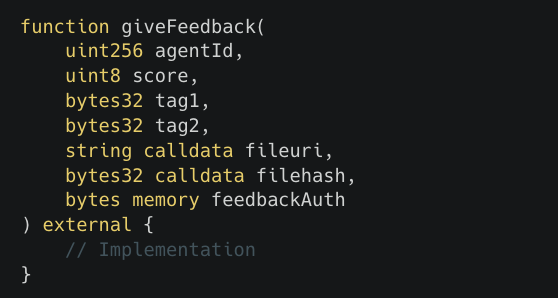
The contractual structure of the reputable register is closely linked to the identity register — — the address of the form is required for deployment to ensure that only the registered AIAgent has access to reputation records。
3. Validation Registration
The provision of generic Hook for requesting and recording independent validation results supports a variety of certification mechanisms, including economic pledge (certificate re-run) and password certificate (TEE certificate, zkML certification, etc.), which allow certification mechanisms for different security needs to coexist in the same ecology。
The contractual interface to validate the registration form is relatively simple and consists mainly of two functions: ValidationReQuest for submitting a certification request, and Validation Response for recording the certification results。
The ERC-8004 is an AIAgent ecological identity layer agreement. It provides AI Agent with a verifiable identity, reputational system and registration mechanism on the chain and is key to building the basis of trust in the machine economy。
the combination of x402, AP2 and ERC-8004 constitutes a complete AIAgent payment system: ERC-8004 addresses the identity of AIAgent, x402 addresses “ and how to use encrypted currency for high-frequency micropayments ” the problem is that AP2 provides a secure and standardized framework for the payment agreement x402, setting an independent economic behavioral boundary for AIAgent that allows them to process information, hold and dispose of assets, and be able to genuinely participate in commercial value exchanges, thereby triggering a new economic shape driven by machine autonomy。